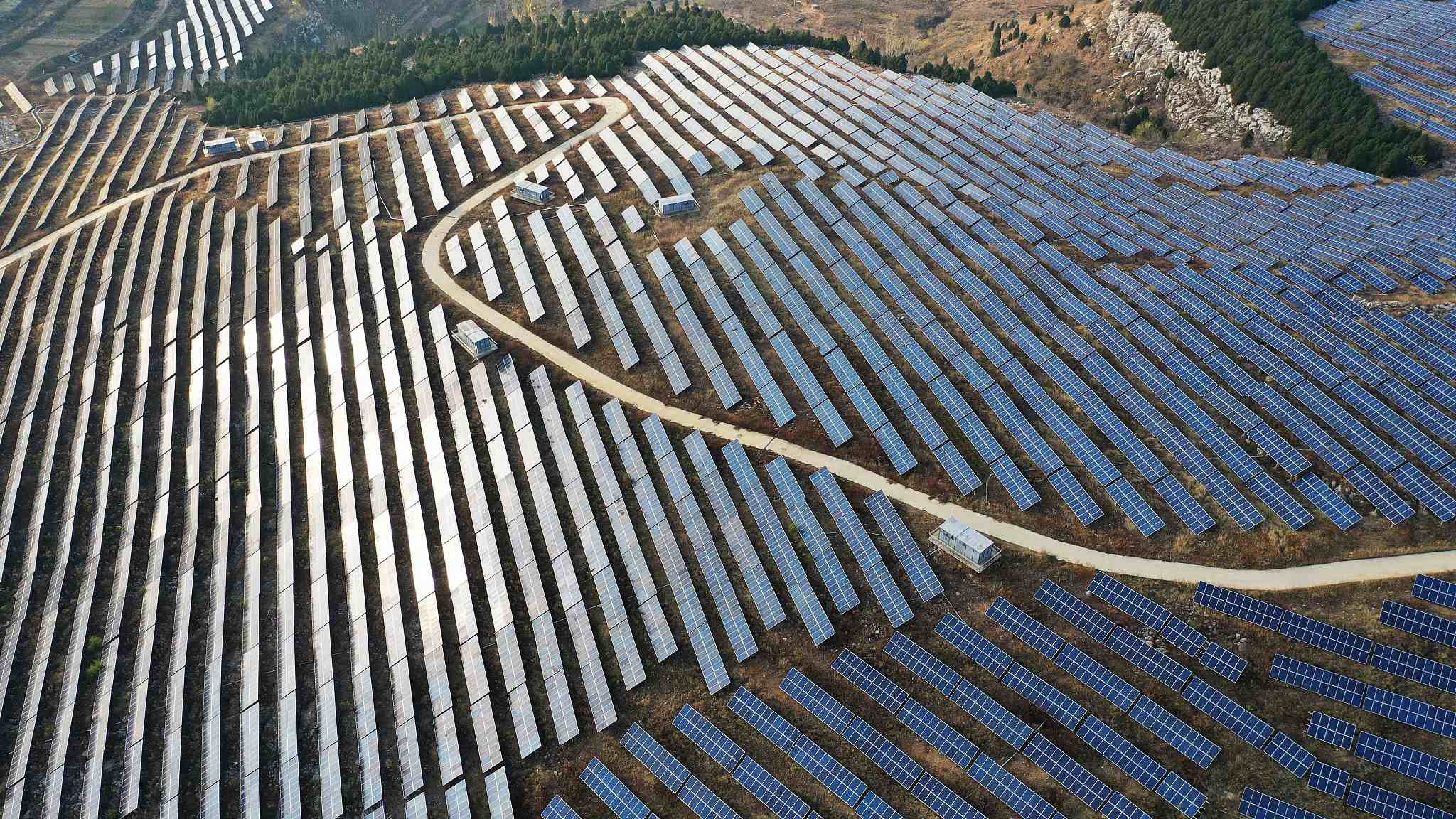
Solar photovoltaic arrays in Zaozhuang City, east China's Shandong Province. /CFP
Solar photovoltaic arrays in Zaozhuang City, east China's Shandong Province. /CFP
China leads the world in the development and utilization scale of renewable energy sources, providing strong support for green and low-carbon energy transformation, Zhang Jianhua, director of China's National Energy Administration, said at a press conference on Tuesday.
By the end of 2020, the total installed capacity of renewable energy power generation – by hydropower, wind power, photovoltaic power and biomass power – in China reached 930 million kilowatts, accounting for 42.4 percent of the total installed capacity, an increase of 14.6 percentage points compared with 2012, said Zhang.
The country's renewable energy generation last year reached 2.2 trillion kilowatt-hours, accounting for 29.5 percent of total electricity consumption, an increase of 9.5 percentage points over 2012. Its non-fossil energy accounted for 15.9 percent of the primary energy consumption, fulfilling China's promise to the global community of 15 percent as scheduled.
"About 40 percent of China's installed power is now from renewable sources, and about 30 percent of its electricity generation from such sources," said Zhang. "China leads the world in total installed renewable energy capacity," he added.
Renewable energy sources that are green and clean help to lay a solid foundation for ecological progress.
In 2020, China's renewable energy development and utilization reached 680 million tonnes of standard coal, equivalent to replacing nearly 1 billion tonnes of coal, said Zhang. It reduced the emissions of carbon dioxide by about 1.79 billion tonnes, sulfur dioxide by 864,000 tonnes and nitrogen oxide by 798,000 tonnes.
Three-pronged measures
China aims to have CO2 emissions peak before 2030 and achieve carbon neutrality before 2060, for which the country will make efforts from three aspects, said Zhang.
The country will strive to develop non-fossil energy sources. By 2030, the proportion of primary energy consumption of non-fossil energy should be about 25 percent, and the total installed capacity of wind power and solar energy should reach over 1.2 billion kilowatts.
It will also promote sustainable energy consumption mode. Stricter energy consumption standards will be adopted, and key sectors including industry, construction, and transportation are encouraged to promote the substitution of non-fossil energy and change the way energy is used.
"The country aims to achieve a 13.5-percent reduction in energy consumption per unit of GDP and an 18-percent cut in carbon dioxide emission per unit of GDP," said Zhang, adding that the two goals have been embodied in the 14th Five-Year Plan (2021-2025).
More supporting policies and measures will be formulated to promote low-carbon energy transformation, high-quality development of new energy sources, and construction of new power systems, Zhang added.

